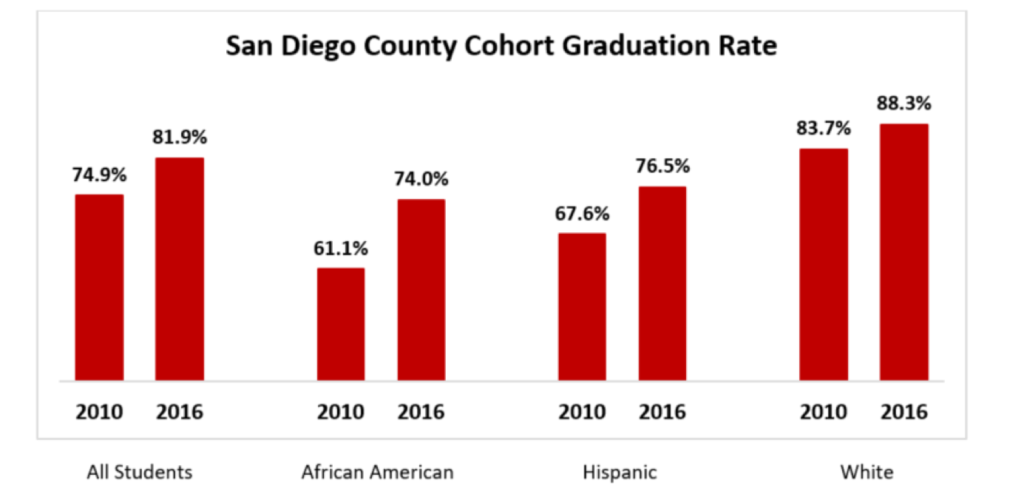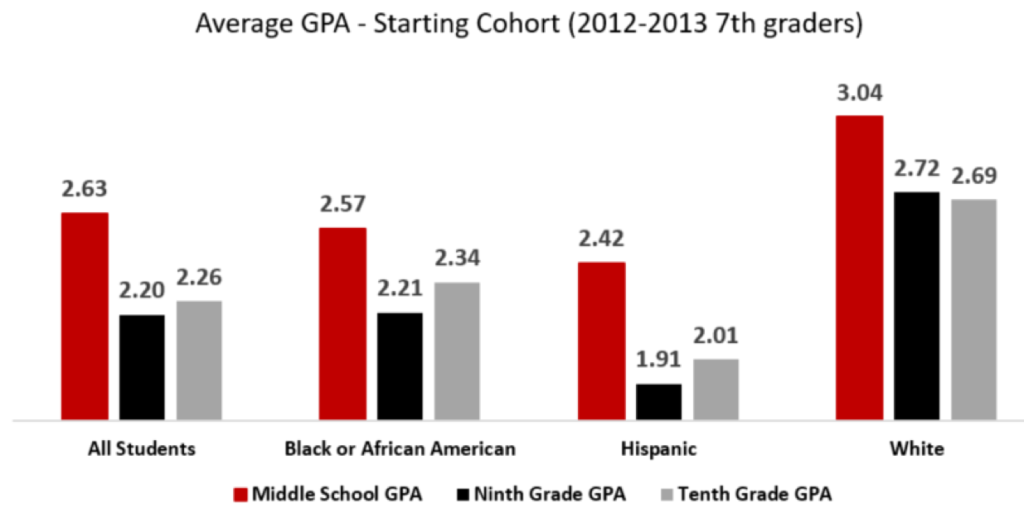On May 29, the San Diego Workforce Partnership (SDWP) held its second OpportunitySD webinar on the leaky education pipeline. The webinar was part of a quarterly series on opportunity youth (sometimes called disconnected youth)—young adults ages 16–24 who are not in school and not working—in San Diego County and the barriers impacting their everyday lives. The webinars are a unique way to collaborate with research organizations to make data more accessible to community members, youth-serving organizations and other stakeholders who are committed to creating equitable opportunities for our young adults and the future workforce.
The May 29 webinar focused on where our young people are exiting the education system before finishing their high school diploma or post-high school degree/certificate. SDWP partnered with Educational Results Partnership (AKA Ed Results), a California-based nonprofit organization that applies data analytics to help improve student outcomes and career readiness. Ed Results has access to all of San Diego County’s community college student data, about half of the student data for K–12 school districts, several of the local universities and wage data. Their analytics follow students within and across levels of schooling to provide unique K-to-career insights about where young people are stumbling in their education pathway. Some of the findings they shared were surprising, some encouraging, and many affirm what educators and community members are seeing on the ground in their work with youth.
While Ed Results shared many interesting findings, three insights stand out:
- Several trends are pointing in the right direction.
- To prevent disconnection, we need to focus on two major high-risk transition points: middle school to high school and high school to college/workforce.
- Young men of color are at particular risk of dropping out of the education system.
SOME GOOD NEWS
With the upward trajectory of the economy, there are hopeful signs for youth. As SDWP has shared, the number of disconnected youth declined from about 43,000 in 2015 to about 41,000 in 2016. Ed Results shared the high school graduation rate data, seen below, which is also encouraging. Thanks to focus by educators on early interventions to make sure students pass the courses they need to graduate, more students are getting their high school diploma in four years. However, Black and LatinX students continue to graduate at much lower rates than White and Asian students, and there are still too many students showing up in community colleges who are not ready to succeed in college-level coursework.

RISKY TRANSITIONS
One point Ed Results emphasized was the importance of transitions, particularly for youth of color. The two transition points of greatest concern are 8th to 9th grade and 12th grade to college. In the Ed Results chart below, you see the disparities in grade point average by race, which decline drastically from middle school to high school for all races, but more for students of color. There are many contributors to this decline, such as low student of color expectations, culturally unfriendly environments and lack of resources in certain schools. Educational Results Partnership indicated that if a student gets an F in the 9th grade, their chance of getting into college is reduced by 12 percent. Smoothing this transition and giving students proper support will give them a better chance of being successful in the long run.

The move from high school to college is the other transition point where we lose students, which Ed Results points out is mainly caused by institutional barriers, not youth failures. Nationally, as many as 20 percent of students graduate from high school and enroll in college, but fail to show up the following fall. Consider the stakes: these are students who have made it all the way to the high school graduation milestone…and then stumble. This attrition rate is known as “summer melt.”
Another high school to college transition barrier is the decision about whether students can take college-level coursework in English and Math versus taking non-college-credit-bearing remedial coursework, also known as basic skills coursework. Students traditionally are sorted into one of two categories—prepared or unprepared—based on standardized placement tests. The issue with a standardized test is they measure a student’s performance on one particular day, often months removed from when they took their last high school class. Many factors can impact a young adult’s performance on any particular da—including lack of skills, but also lack of sleep, malnutrition and/or environmental factors.
Ed Results and its community college partners have shown that placement based on high school coursework and grades yields a much higher success rate in college-level coursework. Grossmont-Cuyamaca College is a local innovator of this new approach with excellent results and other local colleges are adopting it, but implementation requires data sharing by the high school district with Ed Results and/or the community colleges, which typically do not request or receive high school transcripts.
HIGHEST RISK FOR YOUNG MEN OF COLOR
Our region’s highest risk population is young men of color. They currently face profound challenges growing up. They are twice as likely to grow up in poverty as non-Hispanic white males and much more likely to live in neighborhoods of concentrated poverty. As this population moves through life, many face multiple educational and economic disadvantages, leaving African American and Latino males less likely than their white and Asian peers to have high school diplomas and more likely to be jobless. Even boys and young men of color who don’t face as many disadvantages frequently find themselves negatively affected by social and cultural perspectives, institutions and systems within the larger society. Understanding and removing barriers that are created for boys and young men of color will be essential as we surround the highest need young people with extra support.
Ed Results gave an overview of their diagnostic tool to help identify strengths and weakness by district, using their series of rubrics and audit questions, to have an honest authentic conversation with one another. Below were the five success factors they determined for all students, but that are especially relevant for young men of color. Each factor is also paired with Ed Result’s best practice recommendation:
- Curriculum and expectations:Determine and write policies supporting a tight curricular alignment from high school to college that helps students successfully transition and meet the requirements for entering college.
- Culture of Achievement: Clearly establish a system-wide mission believing all students can successfully advance to the next level of education.
- Human Capital: Devote time and effort to hiring the best faculty, staff and academic leaders to prepare students for a successful future.
- Data and assessment: Maintain data to monitor student performance and provide resources for using data to support academic success.
- Personalized learning: Deploy resources and guidance to support all efforts to prepare students for academic success.
The best practices above are specifically designed for school districts. A break down of how to get the best outcomes by school and classroom are available on Ed Results‘ website.
For more information and all the data, watch the webinar here and access slides here. We still have two more OpportunitySD webinars planned for this year on youth unemployment and labor force participation. If you have questions or recommendations on the information you want to learn more about regarding opportunity youth, contact Eric Morrison-Smith at EricS@workforce.org.
